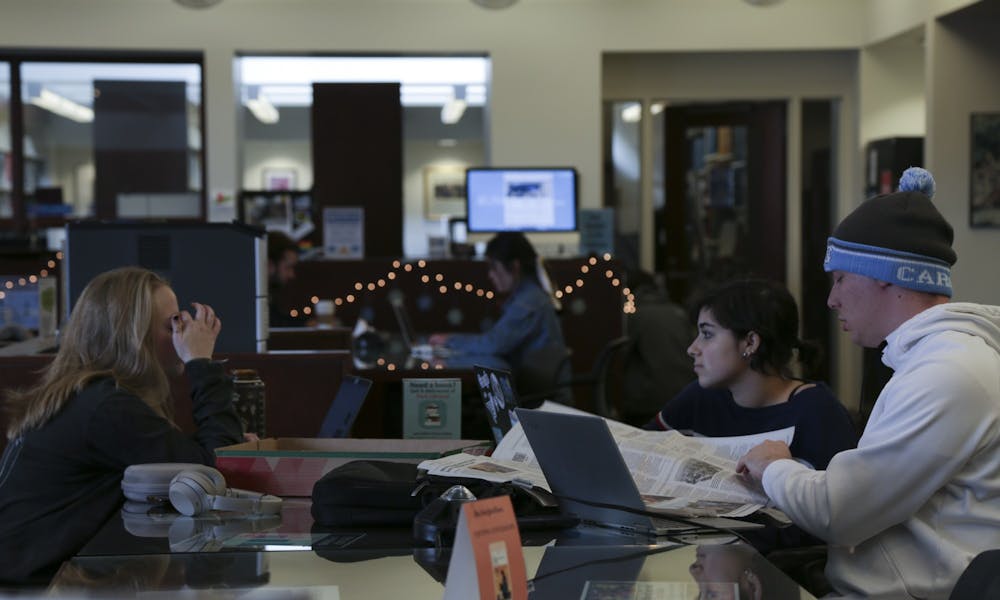As the 2010s progressed, the ways students study has adapted — online resources are now plentiful, and students have a variety of options to study, from study tools on Quizlet to study guides on SparkNotes, as well as library databases designed to help students research.
But the prevalence of these sites doesn’t necessarily mean they are the preferred way to study.
Will Hager, a junior majoring in peace, war and defense, said given the choice, he would rewrite his notes and synthesize information in a group, rather than using sites like Quizlet, which he finds to be most useful for foreign language courses and other memorization-based classes.
“I think, in general, I prefer to just write stuff down," Hager said. "Just the act of writing stuff down reinforces it because you’re writing and remembering it. And that usually works decently for me.”
Dafna Kaufman, a communications Ph.D. student and teaching assistant, has found the shift to online resources to have pros and cons. When students use online resources to share notes, she said it can be difficult to assess whether or not they are reaping the benefits of the course because they may not be directly engaging with the work.
“The beautiful thing about the internet is that you can share knowledge, like students can share Google Docs, but I also feel like there’s a lot of pitfalls,” Kaufman said. “Because people think they’re studying, but really they’re just reading other people’s studying.”
Kaufman said while people think the internet makes them more efficient while studying, she doesn’t know if it actually does — especially since students rely on sites like SparkNotes, which are meant to give plot summaries and overviews of a text.
She said she doesn’t think this reliance is the fault of students. Rather, it speaks to the culture of overwork placed on high school and college students because it means they don’t have time to read assigned material on top of their other obligations.
“There’s this kind of overwork, where you just have to drive everyone crazy with the amount of things they need to do, and then they can’t actually process or take in what they need to from those tasks,” Kaufman said.



